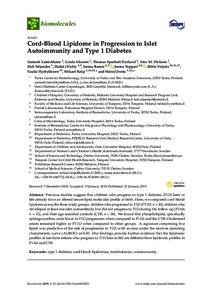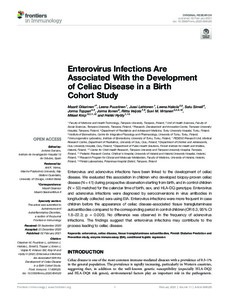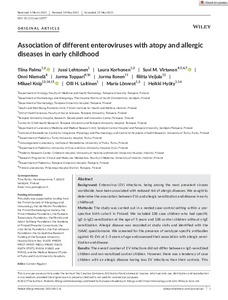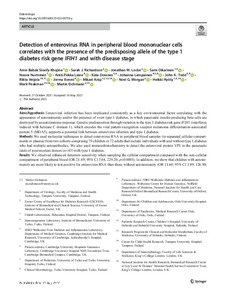Hae
Aineistot 1-8 / 8
Frailty modeling under a selective sampling protocol: an application to type 1 diabetes related autoantibodies
<p>Abstract<br></p><p>In studies following selective sampling protocols for secondary outcomes, conventional analyses regarding their appearance could provide misguided information. In the large type 1 diabetes prevention ...
Cord-Blood Lipidome in Progression to Islet Autoimmunity and Type 1 Diabetes
Previous studies suggest that children who progress to type 1 diabetes (T1D) later in life already have an altered serum lipid molecular profile at birth. Here, we compared cord blood lipidome across the three study groups: ...
Umbilical cord blood DNA methylation in children who later develop type 1 diabetes
<p><strong>Aims/hypothesis:</strong> Distinct DNA methylation patterns have recently been observed to precede type 1 diabetes in whole blood collected from young children. Our aim was to determine whether perinatal DNA ...
Enterovirus Infections Are Associated With the Development of Celiac Disease in a Birth Cohort Study
Enterovirus and adenovirus infections have been linked to the development of celiac disease. We evaluated this association in children who developed biopsy-proven celiac disease (N = 41) during prospective observation ...
Association of different enteroviruses with atopy and allergic diseases in early childhood
<p><b>Background:</b> Enterovirus (EV) infections, being among the most prevalent viruses worldwide, have been associated with reduced risk of allergic diseases. We sought to determine the association between EVs and ...
Detection of enterovirus RNA in peripheral blood mononuclear cells correlates with the presence of the predisposing allele of the type 1 diabetes risk gene IFIH1 and with disease stage
<p><b>Aims/hypothesis</b> Enteroviral infection has been implicated consistently as a key environmental factor correlating with the appearance of autoimmunity and/or the presence of overt type 1 diabetes, in which pancreatic ...







